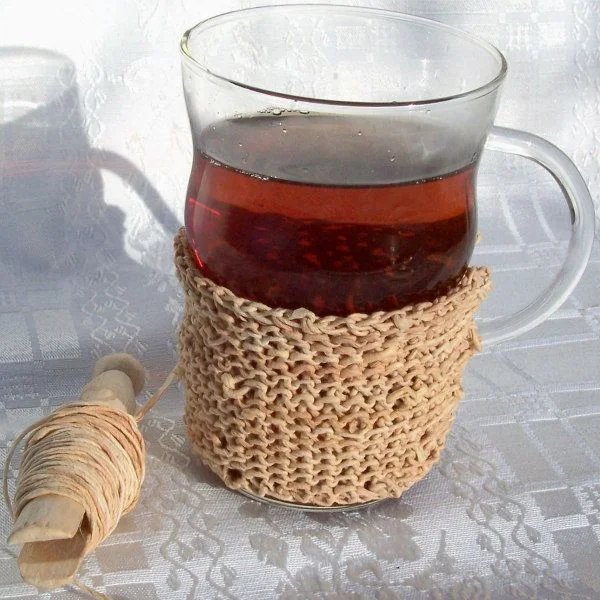 |
| Young children can make paper seashells. |
Her photos first caught my eye via Facebook group, Paper Threads, Yarns and Textiles (a gem of a place for meeting others who are into paper making, paper yarn, and paper sculpture). Ulrike's lovelies are a tribute to the possibilities - and dare I say even the elegance - of upcycled waste paper.
Like many paper people I've come across, her enthusiasm for all that simple paper provides is contagious. It's clear she enjoys experimenting... in the photo above, for example, twisted paper yarn created with undyed teabag paper (the kind that is filled with a tea of choice) was dip-dyed with food coloring and elderberry juice.
Curious to learn more about Ulrike's passion, I wrote to ask about her work as a paper maker.
What initially piqued your interest in paper?
I'm a philologist [Wikipedia: the study of language in oral and written historical sources] focused on 18th century German literature. The authors of that time still had to prepare their material before writing and often reflect on these processes in their books: they had to order paper, cut the paper, prepare the quills, mix the ink, write lots of letters, seal their mail with wax seals... to write was mental work AND handwork somehow! I have always been fascinated by these almost forgotten techniques and most of all I have been fascinated by paper as a material.
 |
| Embedded hydrangea blossoms |
And your interest in papermaking?
I started papermaking, first as a hobby, now it's my little job: I offer my handmade papers, my seed papers, and my paper yarns on Etsy, at local markets, and in my store Handwerkstatt Münster, where you can also attend my papermaking classes (one store, one community of three creative ladies, selling their handmade products and offering workshops and creative events).
What is a typical day like in the life of a papermaker?
The whole process of papermaking takes about three days and each day includes three stages: making today's paper, preparing for the next day of papermaking, and working with the dry sheets from the previous day. In the evenings maybe I'll relax and make some newspaper yarn.
The steps:
The day before actually making the paper, I create recycled pulp using discarded office papers and junk mail in all colors that I store in boxes. I tear the used papers, put the strips in a bucket, and soak them overnight.
On this day I also prepare the motifs... the ones you see on many of my handmade paper products are neither printed nor stamped, but cut by hand from finest paper and embedded during the papermaking process. Each handmade paper card or gift tag is unique.
The next day I beat the pulp with a kitchen blender and start making paper. I have many different moulds and deckles: small and big ones, round and rectangular. I don't use additives, just recycled paper and water. I begin by filling a vat with warm water and pour in some paper pulp. Then I start pulling and couching the sheets, about 20-30 in a batch. After pressing the whole stock, the sheets have to dry: I hang them together with the felts they have been couched on.
Visit Paperuli to see the current items Ulrike has on offer. Her store, Handwerkstatt Münster, is located at Zumsandestr. 32, 48145 in Münster, Germany. You'll find a listing of workshops for adults and children listed on the site (in German) along with paper craft tutorials. Market days begin in October. She posts updates on Facebook and is also on Pinterest.
All Things Paper is an Amazon and Etsy affiliate.
This post
contains affiliate links. If you make a purchase,
I will receive a tiny commission at no additional cost to you.













